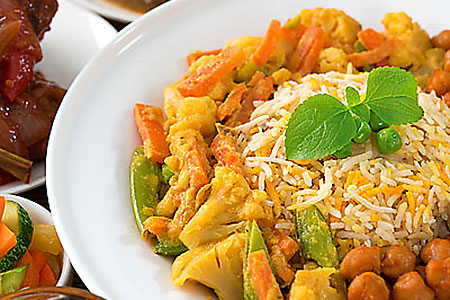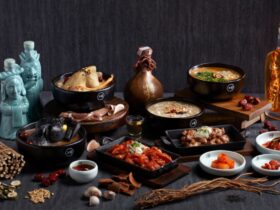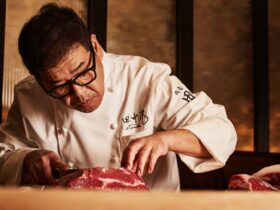
Indulge in a local delight this weekend. Try nasi biryani at these places
Biryani is a hearty rice dish that’s popular around the island, comprising a rich curry and refreshing achar. Here are a few options you can try.
Bismillah Biryani Restaurant
Specialising in authentic Hyderabad biryani, the rice is full-flavoured with the scent of spices but feels lighter due to the absence of oil or ghee. The owner cooks his rice and meat over a charcoal fire with additional charcoal pieces on the top – the traditional method.
50 Dunlop Street, Singapore 209379
Blue Diamond Restaurant
The basmati rice here is evenly coated with masala and comes with a hardboiled egg. The restaurant’s dishes are fairly cheap, with good portions.
24-26 Buffalo Road, Singapore 219791
Islamic Restaurant
Around since 1911, this is one of the oldest biryani places around. Though the service can be a bit brusque,
the food here is fairly decent.
745 North Bridge Road, Singapore 198713
Jaggi’s Northern Indian Cuisine
For 15 years, Jaggi’s has been serving biryani with chicken or mutton. The Chicken Biryani comes with a whole thigh. Jaggi’s Punjabi Style Biryani is a little spicier than others but more fragrant.
34/36 Race Course Road, Singapore 218554
Kasturi Biryani Dam
There are a few well-known names for biryani in Geylang Serai market. The rice here is cooked in the Indian way with spices and some pandan leaves for more fragrance. The accompanying chicken resembles ayam merah more than curry, which is refreshing.
Geylang Serai Market & Food Centre, #02-158
Bokhara Biryani & Kebab
This place doesn’t use any ready-made spices or preservatives in its cooking and all the spice blends for the biryani and accompanying meats are made in-house by their own chef. They also sell vegetarian biryani with paneer dishes.
749 North Bridge Road, Singapore 198717
Allauddin’s Biryani
The generous portions of basmati rice and curry chicken is what makes this stall have a snaking queue at lunch hour. The only negative point is that they use disposable cutlery which makes it tough to cut through the meat without breaking the fork and spoon.
Tekka Centre, 665 Buffalo Road, #01-232, Singapore 210665
INTERESTING TIDBITS: International styles and variations of Biryani
British biryani
Biryani was brought into the UK by primarily Pakistani and Bangladeshi immigrants and is served in the Sindhi biryani style with their common use of yoghurt recipes. Spices are toned down a lot from the original versions and, in most of the restaurants, one has to ask to boost spices to achieve the original effect.

Burmese biryani
Biryani is known in Burmese as danpauk or danbauk, from Persian, dum pukht. Featured ingredients include cashew nuts, yoghurt, raisins and peas, chicken, cloves, cinnamon, saffron and bayleaf. In Burmese biryani, the chicken is cooked with the rice. It is often served at religious ceremonies and luncheons.
Thai biryani
In Thailand a goat version is eaten almost exclusively by the Muslim population. Along with Thai Massaman curry (Musulman Curry) and satay, it is one of the most notable Muslim Thai dishes.
Sri Lankan biryani
Biryani was brought into Sri Lanka by the South Indian Muslims who were trading in the Northern part of Sri Lanka and in Colombo in the early 1900s. It was popularly called ‘Buhari’ Rice by the native Singhalese. In many cases, Sri Lankan biryani is much spicier than most Indian varieties. Side dishes may include achar, Malay pickle, cashew curry and ground mint sambol.
Iranian beriani
During the Safavid dynasty, a dish called Berian Polo was made with lamb or chicken, marinated overnight – with yoghurt, herbs, spices, dried fruits like raisins, prunes or pomegranate seeds – and later cooked in a tannour oven then served with steamed rice.
In its more original form, in some cities the dish is known as dam pokht or dam-pokhtak. The compound in Persian means “steam-cooked”—a reference to the steamed rice that forms the basis of the dish. This name is still in common use in Iran alongside “beriani”.
In the central Iranian city of Isfahan, Berian is made with cooked mutton or lamb, which is stewed and minced separately, and then grilled in special small round shallow pans in an oven or over a fire. The meat is generally served with powdered cinnamon in a local bread, usually “nan-e taftoun”, but also occasionally “nan-e sangak”.
Source: wikipedia.org
Republished from Issue 38.
ADVERTISEMENTS









